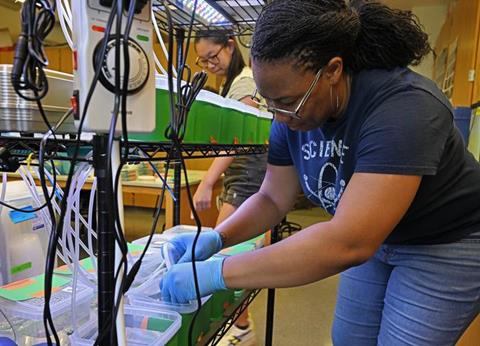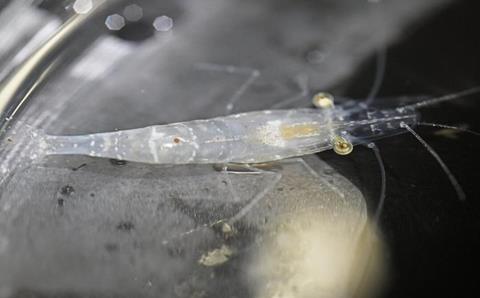Connecticut College researchers have found that chemical byproducts produced by the amphibian-killing fungus Batrachochytrium dendrobatidis—commonly known as Bd—may actually help ghost shrimp survive. Their study, published today in PeerJ, offers deeper insight into how these compounds affect non-amphibian species in freshwater ecosystems.

The team—led by Ellisa Carla Parker‑Athill and Taegan McMahon—used a controlled lab design to compare shrimp given either artificial spring water or a filtered solution containing Bd metabolites. Over a two-week period, they tracked heart rate, behavior, and survival.
READ MORE: Drought may drive deadly amphibian disease by disrupting skin microbiome
READ MORE: Chytrid fungi revealed to be parasitic species that infects snow algae
Ghost shrimp play a critical role in freshwater systems by cycling nutrients and supporting other wildlife. Because Bd metabolites are under consideration as a prophylactic treatment for declining amphibian species, it is important to understand how such use might affect other organisms in shared ecosystems.
“Our goal was to understand whether these fungal byproducts, which are being explored as potential prophylactic treatments for amphibians, might have unintended effects on other organisms that share the same ecosystems,” said Parker-Athill.
Unintended effects
Key findings include:
-
Shrimp exposed to the metabolites experienced 48% lower mortality compared to the control group.
-
These shrimp also showed a lower heart rate and were less likely to display evasive behaviors—a shift that may affect their risk of predation in natural settings.
-
The study found no gill damage or other obvious signs of stress in shrimp exposed to the metabolites.
The findings challenge assumptions that Bd byproducts are universally harmful. Instead, at low doses, they might confer survival benefits—though the study also highlighted behavior changes that could increase predation risk. Researchers stress that these outcomes warrant further exploration before conservation policies are developed around Bd metabolite use.
Benefits and trade-offs
“While the results may seem counterintuitive given the fungus’s deadly impact on amphibians, the lower mortality rate and altered behaviors suggest that Bd metabolites could have complex physiological effects across species,” said McMahon. “These findings open the door for more research into the potential benefits and trade-offs of using Bd metabolites in conservation work.”

Previous research has focused heavily on amphibians, which have experienced widespread declines due to Bd. But the Connecticut College team emphasizes the importance of understanding the broader ecological consequences of fungal pathogens and their byproducts, particularly as scientists explore large-scale applications to help amphibian populations resist infection.







No comments yet